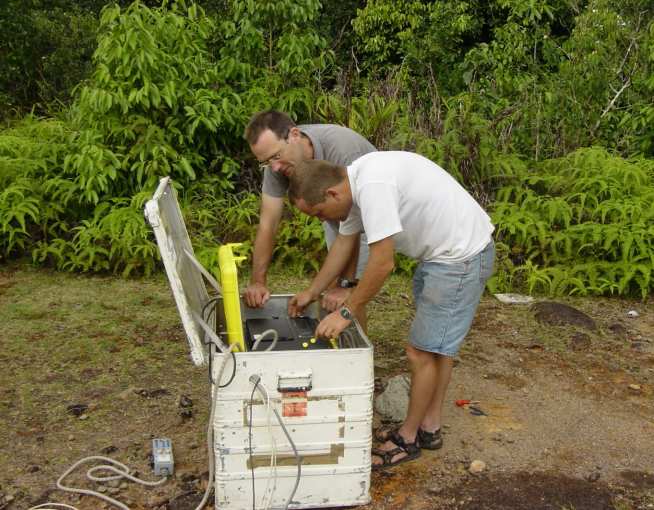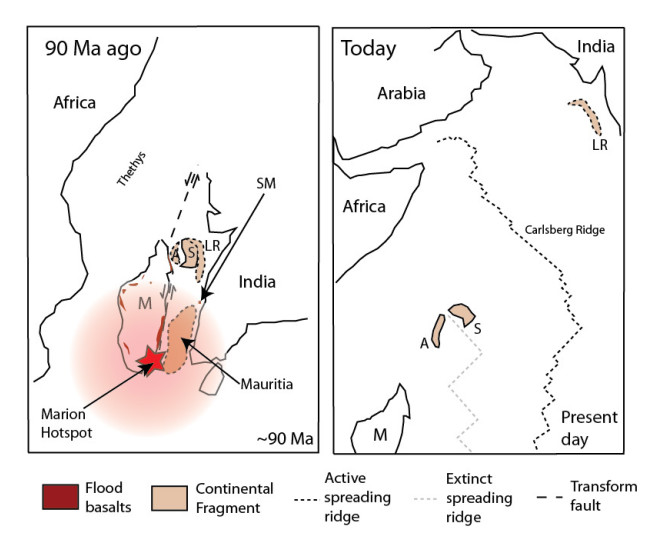Structure of the Seychelles archipelago

The granitic islands of the Seychelles Plateau have long been recognised to overlie continental crust, isolated from Madagascar and India during the formation of the Indian Ocean. However, to-date the extent of continental crust beneath the Seychelles and importance of volcanic additions during its isolation region remains unknown. Constraining the size and shape of the Seychelles continental fragment is needed for accurate plate reconstructions of the breakup of Gondwana and has implications for the processes of continental breakup in general. To help solve this problem we installed a network of broadband seismometers throughout the Seychelles archipelago for a period of a year (Fig.1). We then estimated crustal thickness and Vp/Vs from H-k stacking of receiver functions. The results were verified by forward modelling of ship-collected gravity data.

The majority of the Seychelles Islands away from the topographic plateau show no direct evidence for continental crust. The exception to this is the island of Desroche on the northern Amirante Ridge, where thicker low density crust, consistent with a block of continental material is present. We suggest that the northern Amirantes are likely continental in nature and that small fragments of continental material are a common feature of plume affected continental breakup (Fig.2).
The data we collected also showed the Seychelles islands to be underlain by a stratified upper mantle with exceptionally low S-wave velocities at depths of between 50 and 190 km. We believe these layers relate to earlier interactions of the region with mantle plumes.
Publications
Hammond JOS, Kendall J-M, Collier JS, Helffrich G, Rumpker G, (2013). The extent of continental crust beneath the Seychelles, Earth and Planetary Science Letters, Vol:381, Pages:166-179 (doi)
Hammond JOS, Collier JS, Kendall J-M, Helffrich G, Rumpker G, (2012). Plume scar in the mantle lithosphere beneath the Seychelles revealed by seismic imaging, Earth and Planetary Science Letters, Vol:381, Pages:166-179 (doi)